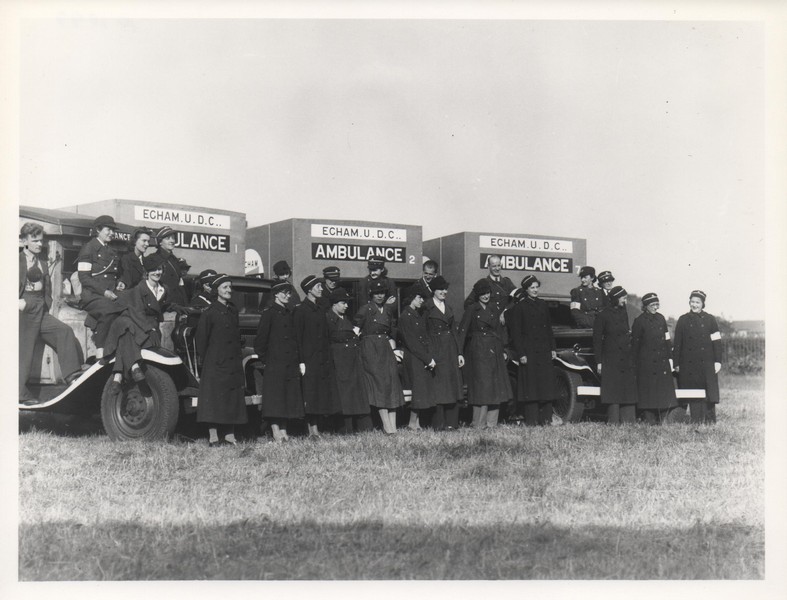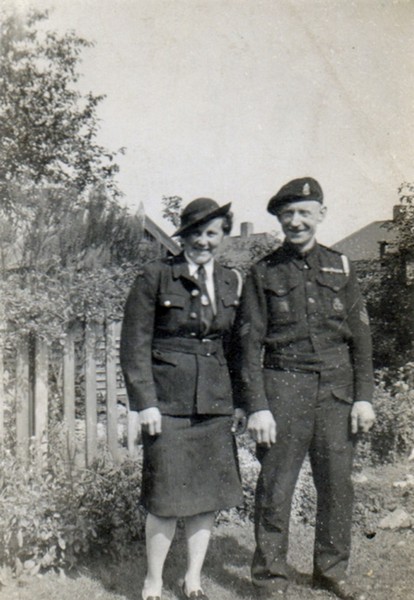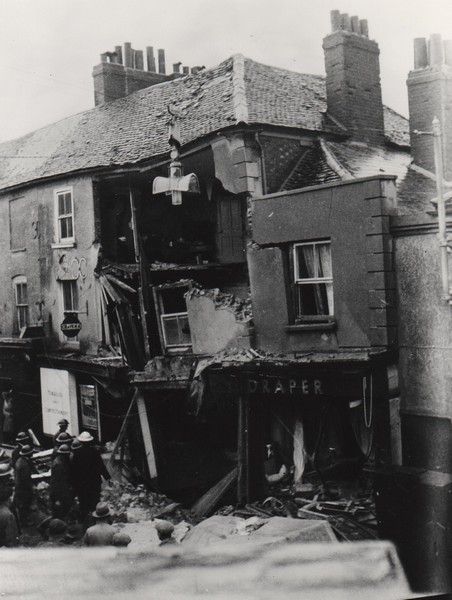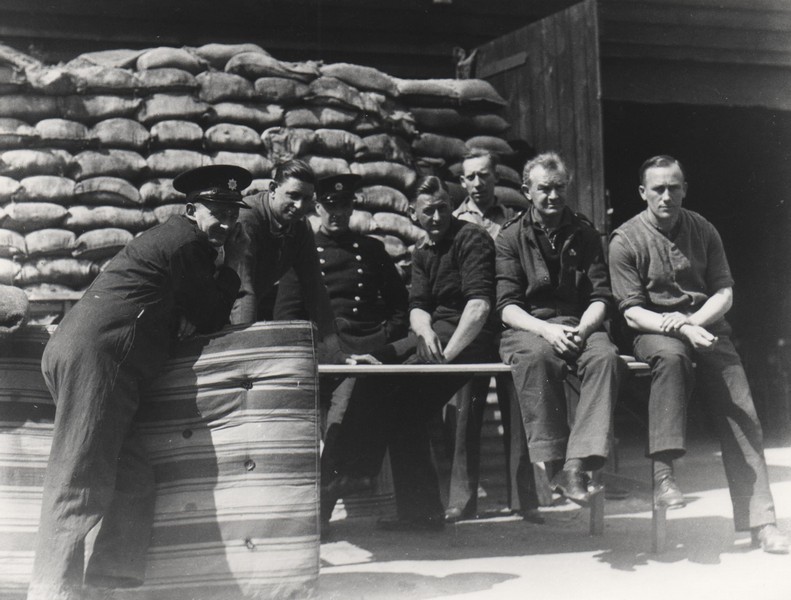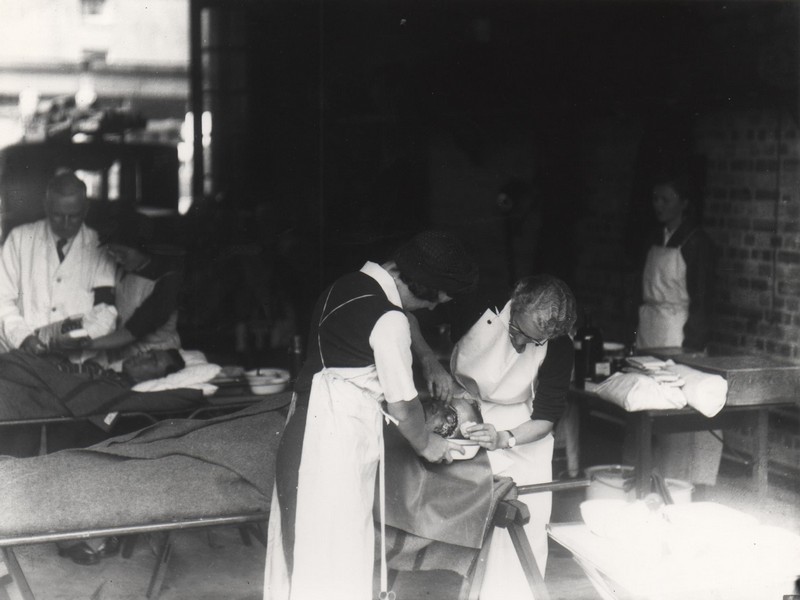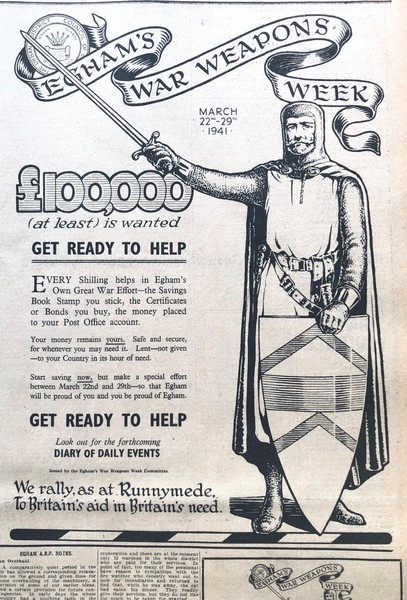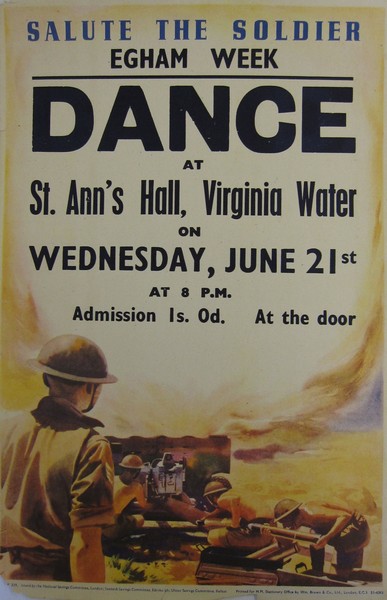Egham’s Home Front: Welfare and Healthcare in World War Two
Women’s Work
As they had in the first world war, the lives of women changed drastically during World War Two. Domestic service came to an end for many.
Jobs outside the home were varied, as women frequently took up jobs which had previously been occupied by men who were now called up to joined the armed forces. Women in Egham became teachers, drivers, nurses and much more as their husbands, brothers and fathers were conscripted into the army.
“I left school on the Tuesday and I started work on the local paper the next morning… only got it by virtue of wartime”
While many women took on (often voluntary) roles in their local community, many also had a strong desire to serve their country in the Army, Navy and Air Force or complete other, more specialised war work.
“I became terrified that {the war} would finish before I could get into the Navy”
We know from the local Red Cross Division that local First Aid Post volunteers went on to complete hospital training, joined the Women’s Royal Naval Service (WRNS, known and the Wrens) or the Auxiliary Territorial Service (ATS) or moved away to work in factories.
Air Raid Precautions
In December 1937 the Air Raid Precaution Act made it compulsory for all local authorities recruit volunteers for civil defence and the emergency services, amongst other things including distributing gas masks. Egham and the surrounding area was no different. While the so-called ‘Dad’s Army’ was mocked in the early days, it became an invaluable resource to local communities once their need became clearer.
There were a number of air raid incidents in the Egham area including the Luftwaffe bombs which hit Arkell’s Drapers shop on 16 November 1940. Three school children died; two evacuated boys from Stepney and the young daughter of the family. Later, during a raid on the night of the 9 January 1941, the area between Milton Park and Egham Hythe was set alight when 200-300 magnesium incendiary bombs were dropped.
The first responders to these incidents would have been Air Raid Wardens (paid and unpaid) and other volunteers. One Egham resident recalls being required to wait at the Egham Ambulance Station, and should Egham be bombed he would have taken messages by bicycle to where they needed to go.
“Air Raid Wardens – A few vacancies exist in the district for paid wardens. Applicants should be resident in the district and be more than 40 years of age or exempt from military service. The wages are £3 5s. for men and £2 3s. 6d. for women. Application should be made to the Chief Warden, A.R.P Office, 141 High Street, Egham.”
The Staines and Egham News, January 3 1941
The British Red Cross
When the war was declared in September 1939, the British Red Cross joined forces with the Order of St John to help the sick and the wounded. They formed the Joint War Organisation as they had during the First World War.
They provided ambulance services to the Army, carrying 1,013,076 casualties and patients and covering 9,142,621 miles. The Red Cross also set up the Wounded, Missing and Relatives Department to help families worried about a loved one. Red Cross staff and volunteers also set up First Aid Posts (FAP) and recovery homes or additional support to hospitals.
The Red Cross was managed in counties and each branch had their own groups of volunteers called Voluntary Aid Detachments (often abbreviated to VAD). Voluntary Aid Detachment members themselves came to be known simply as ‘VADs’.
“During the first fortnight of war Red Cross members reported to hospital trains; first aid personnel were quickly on duty locally. The conditions under which nursing auxiliaries were suddenly called to work in emergency hospitals, for evacuated children and helpless patients from institutions, would have dismayed any less loyal to the Society’s ideals. The Branch, men and women, proved the value of their undertaking to the country – and to the leadership given to them. The initial problems have been overcome, but others present themselves and will continue to do so. They will, I know, be met with the same courage.”
Red Cross President’s Report, 1939
Red Cross in Egham
Located in Park Road, the Egham First Aid Post was a hub of activity providing training and support to the local community. Its staff and volunteers offered mobile first aid care in the form of ambulances and treated minor injuries including concussion, minor cuts and shock. They then sent patients home or to hospital depending on the severity of their condition.
A large collection of items related to the local Red Cross was donated to the museum in 2004. This included the First Aid Post logbook from February 1940 to June 1941. This document details the day-to-day running of the post. From the mundane comings and goings like “19.4.40: Miss Vickers called in in morning; she is to be away for about 10 days” to details on training completed and inspections undertaken.
Fundraising
Throughout the war, there were national campaigns in order to raise funds for the war effort. Local communities were encouraged to save through schemes such as War Bonds or Defence Bonds. They were themed each year in order to encourage people to rally around the cause. Themes included Spitfire Fund’ (1940), ‘War Weapons Week’ (1941), ‘Warship Weeks’ (1941 / 1942), ‘Wings For Victory Week’ (1943) and ‘Salute the Soldier Week’ (1944).
Updates were reported in the local newspaper, The Staines and Egham News with various dances, parades and meetings taking place across the area. While the Spitfire Fund (1940) seems to have been managed by individuals and small committees, the 1941 War Weapons Weeks (22 – 29 March) achieved its goal of saving £100,000 five days into the week-long initiative and was celebrated by the community.
Spitfire Fund
As most of the other efforts of the district preferred to remain aloof and supremely individualistic, our Committee decided it would be better to close down our Egham effort – this resulted in £63, altogether a respectable total and well worth while. Had all the funds in this area formed a liaison or made a unified effort there would have been a good prospect of our district having its own Spitfire – a pity this could not be effected owning to the insularity of certain groups.”
Extract from the January Parish Magazine, published
in the Staines Egham News on 7 February 1941

